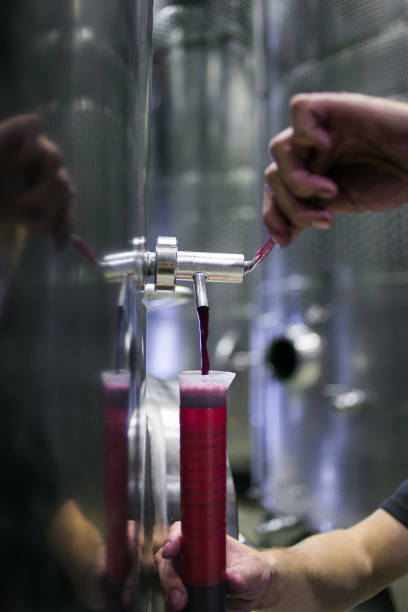Regardless of your preferred method, you need to know how to measure alcohol content without original gravity in beer or wine. Several ways are available, including using hydrometers, Plato meters, and refractometers. OG and FG are the primary factors determining the alcohol content of a beverage and can be calculated using various laboratory techniques.
Measure the Alcohol Content of the Wort
When brewing homemade beer, you can often make do without original gravity. To do this, you need to measure the alcohol content of your wort using its final gravity, attenuation rate, and freezing point. You can also estimate the alcohol content by comparing the final Brix value to its original gravity. In case of insufficient or inaccurate results, you can always approach a laboratory for testing. While you may not need to measure alcohol content in your beer, it is still valuable to know its alcohol content.

Close up view of a hydrometer used while testing the sugar in wine
The OG/FG Ratio
You can calculate the alcohol content of a beer or wine by using the OG/FG ratio. You can also use the density meter to determine the alcohol content in a wort sample. First, you can evaluate the OG/OG by using a hydrometer. After fermentation, the density meter measures the alcohol content and residual sugar in the wort. The alcohol concentration is then measured using a specific gravity meter. Although this is an exact measurement, it helps benchmark purposes.
Another useful way to measure alcohol content is to use the FG/FG ratio. This method requires a precise reading of the OG/FG ratio. The OG refers to the original gravity, and the FG/OG ratio is the final gravity. It measures the alcoholic content in the wort and the alcohol. Usually, it’s a good idea to check your beer’s FG/FG ratio before fermentation.
Original gravity is another way to measure alcohol content in a beer. OG/FG ratio measures the number of sugars present in the wort before it ferments. When the OG/FG ratio is higher than the FG ratio, the alcohol content in the beer is higher. Therefore, it is crucial to measure the OG/FG to determine the alcohol content. You can also use the final Brix value to estimate the original gravity.
Determine The Gravity
To determine the original gravity of the wort, you need to know its apparent specific gravity. Several factors influence a gravity reading, including the fineness of grains, quality of water, and temperature of the mash. By practicing, you’ll become more confident at reading the OG and the apparent specific gravity of your beer. But despite this, you should always aim for a ballpark FG and ignore the home runs. Using an FG/OG ratio will help you determine the alcohol content, regardless of its origin.
Gravity Meter
Using a specific gravity meter is essential for determining the alcohol content in a beer. It’s the best way to determine the alcohol content in a beer. However, it’s essential to check the alcohol content regularly. If you don’t do so, you might get stuck with a batch that’s too high or low for your tastes. You should make sure the specific gravity of your beer matches the original gravity of the keg and avoid fermenting a keg or bottle that’s too thin or too thick.
The original gravity is a crucial factor for home brewing. It is the best way to calculate the alcohol content in a beer. In a beer, a specific gravity of 1.042 is considered the original gravity of a beer. Depending on the FG/FG ratio, it can range from 5% to over ten percent. A gram of wort may be more than twice the original volume.
Original Gravity
A gram of alcohol in a beer is called the original gravity (OG). OG refers to the density of a liquid in pure water. If a beer’s original gravity is lower than this, it is less than it should be. The FG/OG ratio is the best way to determine the alcohol content. You can calculate the FG/OG ratio if you don’t have a gram. If the two values are similar, you will have a rough idea of how much alcohol your wort contains.

